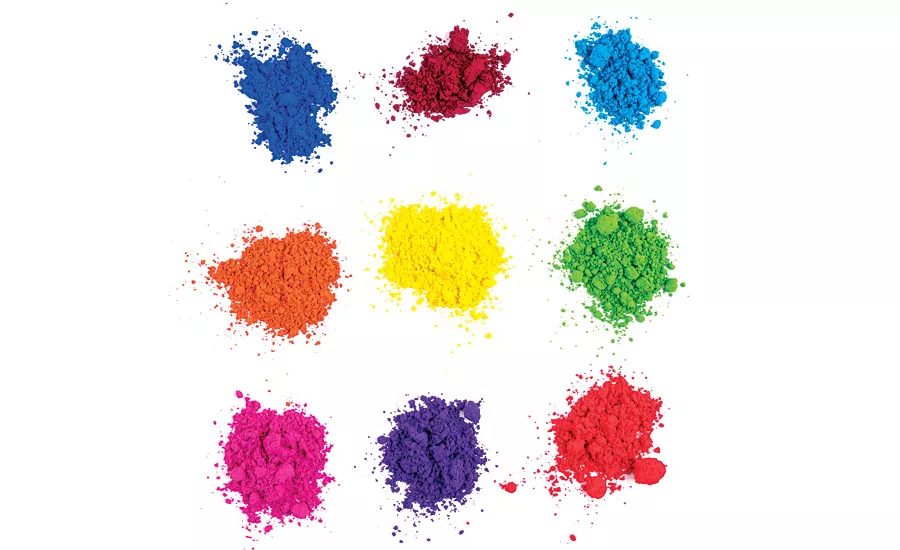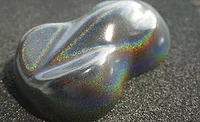The Emergence of Naturally Sourced Colorants
and Their Role in Advancing Modern Pigment Technologies

Humans have used color as a means of expression since the prehistoric ages. From scratches on trees and rocks, food or water indicators, territorial markers, to painted images in caves and other surfaces, the applicability of colorants or pigments has continued to broaden significantly over the years.
This, in turn, has contributed to persistent efforts towards developing better pigment technologies. The earliest known pigments used by ancient civilizations were derived from natural sources such as ground minerals and charcoal, among others. Many cave paintings from the Paleolithic and Neolithic eras feature yellow ochre (hydrated iron oxide, Fe2O3·H2O), red ochre (iron oxide, Fe2O3), and carbon black, indicating that these pigments were known to prehistoric humans.
B.C.E. 2000 and subsequent years saw the rise of synthetic pigments, such as white lead, which was created through the combination of vinegar and lead in the presence of CO2, and Egyptian blue or calcium copper silicate, which was derived from malachite or other copper ore-colored glass.
While red ochre, limestone, charcoal and the like constituted a major part of the early pigments market, the onset of the industrial age also triggered the development of novel colorants such as iron oxide, cadmium, titanium dioxide and chromium, among others, which are used extensively in the modern world.
With more and more pigment technologies emerging from the woodwork over the years, keeping track of compositions became increasingly more challenging. A solution to this challenge came to light in the 20th century, when the International Organization for Standardization created standards pertaining to pigment characteristics and testing. The Colour Index International is a notable example of such a published standard index, with over 27,000 pigments indexed in its schema, designed to identify the colorants based on their chemical compositions.
While pigments and dyes are both characterized as colorants, they have some distinguishing factors that set them apart from one another. One of these factors is solubility. Pigments are generally dry formulations that are insoluble in liquid carriers and thus form a suspension when combined with liquids. On the other hand, dyes are liquid colorants that can dissolve in liquids to form a solution. Soluble dyes may occasionally also be precipitated to form a metal salt pigment, also known as a lake pigment, which includes indigo lake, aluminum lake, etc. Pigments and dyes also have different particle sizes. Pigments are made up of larger particles with UV stability properties, whereas dyes are generally made up of finer particles.
Rising Focus on Biocolorants
Recent years have witnessed a marked shift in global trends towards the use of more environmentally sound and biodegradable commodities. This has been prevalent to a great extent in the modern pigments industry, where the demand for natural coloring agents has been growing steadily across the textiles, cosmetics, pharmaceutical, and food and beverage industries, among others. According to some studies, the annual growth rate of natural dyes has been estimated at around 5-10% as compared to the lower rate of 3-5% demonstrated by synthetic dyes.
Many biocolorants are found in nature, from a variety of resources such as plants and microorganisms, which are coming to be viewed as increasingly suitable alternatives to conventional synthetic pigments and dyes in use currently. This burgeoning interest in naturally sourced pigment technologies is mainly due to the rising awareness regarding environmental and human health conservation, as colorants derived from natural flora and fauna are considered to be safer, owing to their non-carcinogenic, non-toxic and biodegradable nature.
Microbes, insects, plants and ores are among the most common sources of natural pigments. Pigments sourced from microorganisms are gaining massive traction in recent years, given their perennial availability and stability. Bacterial pigments, especially, are considered a promising research endeavor, with studies being conducted for their applicability across myriad industrial sectors.
The textile industry is one of the largest consumers of colorants in the industrial landscape. Studies suggest that the textile industry is responsible for the production and use of nearly 1.3 million tons of pigments, dyes and dye precursors, most of which are synthetically produced. However, due to strong health concerns associated with synthetic pigments, such as their use of potentially harmful chemicals, hazardous waste generation and worker safety issues, these colorants are considered detrimental to environmental health. Bacterial pigments and other biocolorants are being hailed as a lucrative solution to this challenge, attracting the interest of key players in the industry.
For instance, a British biotechnology startup, Colorifix, is working on a method of dyeing textiles that involves the use of microorganisms to recreate bright colors on fabrics, thereby cutting down on the use of water and hazardous chemicals in the process. By studying the ability of microbes to deposit and fix pigments on fabrics, the company has been able to mitigate the use of harmful heavy chemicals and reduce water consumption by over 90%, depending on pigment, fabric and equipment, as well as reduce the temperature of the process substantially, as compared to conventional dyeing methods.
Robust Industry Outlook
As the importance of colorants and pigments continues to become more prevalent, scientists and pigment producers are consistently seeking new ways to create more extreme color technologies that transcend the abilities of their existing counterparts. For instance, in 2019, a team of scientists from MIT introduced what is hailed as the “blackest black” pigment to date, made using carbon nanotubes, the same material used to create Vantablack, which held the record for the world’s darkest material, back in 2014. While the foil was built on the same type of nanotubes, the difference in synthesis was what enabled the new material to capture over 99.995% of light.
Similar progress was made by scientists from Karlsruhe Institute of Technology, whose efforts led to the creation of a very thin polymer foil able to scatter photons more efficiently, thus becoming a more sustainable alternative to traditional white pigments. The material derived from the new pigment technology demonstrates widespread application potential across the industrial landscape and has been created as a suitable replacement for titanium dioxide, which has been the standard white pigment option for myriad purposes such as paints, lacquers, plastics, foods, cosmetics and more.
Conclusion
Pigments and colorants have triggered a considerable change on a global scale, altering the way people perceive and interact with colors. Scientists and artists alike have been invested deeply in isolating pigments from nature and developing novel pigment technologies to preserve and protect the integral role of color in every aspect of human life. As these developments and efforts continue to flourish with each generation, the global pigments market will likely witness a more sustainable and colorful journey over the years ahead.
Looking for a reprint of this article?
From high-res PDFs to custom plaques, order your copy today!






